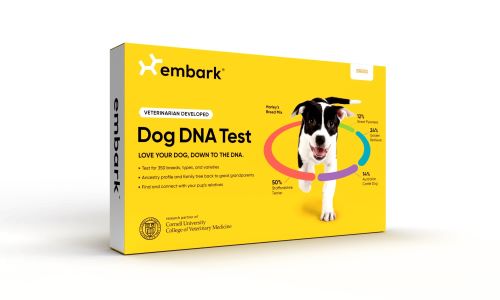
Did you know that canine Cushing’s disease is one of the most common dog diseases? It affects approximately 100,000 dogs in the United States every year.
Cushing’s disease, also known as Cushing’s syndrome, is a condition in which the adrenal glands overproduce certain hormones, particularly cortisol. It can have a significant impact on a dog’s overall health and well-being. Understanding the effects and symptoms of Cushing’s disease is crucial for early detection and effective management.
Key Takeaways: Canine Cushing’s Disease
- Cushing’s disease is one of the most common dog diseases.
- It affects approximately 100,000 dogs in the United States every year.
- Cushing’s disease is caused by the overproduction of cortisol, a hormone produced by the adrenal glands.
- Common symptoms of Cushing’s disease include increased appetite, increased water consumption, lethargy, and poor hair coat.
- Early diagnosis and proper management are essential for the well-being of dogs with Cushing’s disease.
Causes of Cushing’s Disease in Dogs
Cushing’s disease in dogs can be caused by several factors, including pituitary gland tumors, adrenal gland tumors, and prolonged use of steroids. Understanding the underlying cause of the disease is essential for accurate diagnosis and effective treatment.
Pituitary Gland Tumors: The most common cause of Cushing’s disease in dogs is a pituitary gland tumor, accounting for 85%-90% of cases. These tumors can be either benign or malignant and result in the overproduction of adrenocorticotropic hormone (ACTH). ACTH stimulates the adrenal glands to produce excessive cortisol, leading to the symptoms of Cushing’s disease.
Adrenal Gland Tumors: Adrenal gland tumors, both benign and malignant, can also contribute to the development of Cushing’s disease in dogs. These tumors disrupt the normal hormone production in the adrenal glands, causing an imbalance that results in elevated cortisol levels.
Prolonged Use of Steroids: Iatrogenic Cushing’s disease occurs when dogs are exposed to long-term or high-dose steroid treatments. Steroids such as prednisone are commonly prescribed for various medical conditions in dogs. However, the prolonged use of these medications can disrupt the body’s natural cortisol balance and lead to the development of Cushing’s disease.
Diagnosing Canine Cushing’s Disease
Diagnosing Cushing’s disease in dogs involves a comprehensive evaluation and a range of diagnostic tests. By identifying the cause of the disease, veterinarians can determine the most appropriate treatment plan for each individual dog.
Some common diagnostic methods for Cushing’s disease in dogs include:
- Complete Blood Count and Biochemistry Profile: These blood tests can reveal abnormalities associated with Cushing’s disease, such as elevated liver enzyme levels and changes in blood cell counts.
- ACTH Stimulation Test: This test measures the dog’s cortisol levels before and after the administration of synthetic ACTH. It helps determine if the adrenal glands are functioning properly and responding to stimulation.
- Low-Dose Dexamethasone Suppression Test: This test evaluates the dog’s cortisol levels after the administration of dexamethasone, a synthetic steroid. It helps differentiate between pituitary and adrenal gland causes of Cushing’s disease.
- Imaging Tests: X-rays and abdominal ultrasound can provide additional information about the size and condition of the adrenal glands and help identify any tumors present.
By combining these diagnostic tests and clinical observation, veterinarians can accurately diagnose Cushing’s disease in dogs and develop an appropriate treatment plan.
Treatment Options for Cushing’s Disease in Dogs
The treatment options for Cushing’s disease depend on the underlying cause and the dog’s overall health. The primary goals of treatment are to manage symptoms, control cortisol levels, and improve the dog’s quality of life.
Pituitary Gland Tumors: Medications are often used to manage pituitary gland tumor-induced Cushing’s disease. Commonly prescribed medications include trilostane, mitotane, selegiline hydrochloride, and ketoconazole. In certain cases, surgical removal of the pituitary tumor or radiation therapy may be considered.
Adrenal Gland Tumors: Adrenal gland tumor-induced Cushing’s disease often requires surgical intervention. Complete surgical removal of the tumor is the preferred method of treatment. In cases where surgery is not feasible, medications may be prescribed as an alternative.
Prolonged Use of Steroids: If Cushing’s disease is caused by iatrogenic factors, the gradual discontinuation of steroid medications under veterinary supervision is necessary.
Additionally, holistic approaches that include dietary changes, herbal supplements, and stress reduction techniques may complement the primary treatment plan.
Regular monitoring and follow-up visits with the veterinarian are essential to evaluate the dog’s response to treatment and make any necessary adjustments.
Diagnosing Cushing’s Disease in Dogs
Diagnosing Cushing’s disease in dogs requires a comprehensive approach involving thorough examination, history taking, and a series of tests. Recognizing the signs of Cushing’s disease is an important initial step in the diagnostic process. Common clinical manifestations such as increased appetite, elevated water consumption, and frequent urination can serve as valuable indicators.
Diagnostic tests play a crucial role in confirming Cushing’s disease in dogs. Blood tests, including a complete blood count and biochemistry profile, can reveal specific abnormalities associated with the condition. A comprehensive blood panel may show a stress leukogram and elevated liver enzyme levels, providing further evidence of Cushing’s disease.
Imaging tests, such as X-rays and abdominal ultrasounds, can provide additional insights into the presence of underlying tumors or structural abnormalities. These tests allow veterinarians to gain a comprehensive understanding of the dog’s condition.
The two most commonly employed blood tests for diagnosing Cushing’s disease in dogs are the ACTH stimulation test and the low-dose dexamethasone suppression test. The ACTH stimulation test measures the adrenal gland’s response to cortisol-releasing hormone, while the dexamethasone suppression test evaluates the body’s ability to regulate cortisol production.
Additional tests, such as endogenous ACTH levels, high-dose dexamethasone suppression test, or a urine cortisol:creatinine ratio, may be performed to precisely determine the type of Cushing’s disease and guide treatment decisions.
Diagnostic Methods for Canine Cushing’s Disease
| Diagnostic Test | Procedure | Purpose |
|---|---|---|
| Complete blood count and biochemistry profile | Examination of blood samples | Identify abnormalities associated with Cushing’s disease |
| X-rays and abdominal ultrasound | Imaging tests | Assess the presence of tumors or structural abnormalities |
| ACTH stimulation test | Administration of synthetic ACTH and cortisol measurements | Evaluate adrenal gland response to cortisol-releasing hormone |
| Low-dose dexamethasone suppression test | Administration of dexamethasone and cortisol measurements | Assess the body’s ability to regulate cortisol production |
| Endogenous ACTH levels | Measurement of ACTH hormone in the blood | Differentiate pituitary-dependent from adrenal-dependent Cushing’s disease |
| High-dose dexamethasone suppression test | Administration of high-dose dexamethasone and cortisol measurements | Further evaluate the body’s ability to suppress cortisol production |
| Urine cortisol:creatinine ratio | Analysis of cortisol and creatinine levels in urine | Aid in differentiating between types of Cushing’s disease |
Treatment Options for Canine Cushing’s Disease
Treatment for Cushing’s disease in dogs varies based on the type of the disease. The goal of treatment is to manage the symptoms, improve the quality of life, and minimize the production of excess cortisol. Here are some treatment options commonly used:
1. Medications:
For pituitary tumor-induced Cushing’s disease, medications such as trilostane, mitotane, selegiline hydrochloride, and ketoconazole may be prescribed. These medications work by either inhibiting the production of cortisol or controlling its release. Regular monitoring is necessary to adjust the dosage and ensure the effectiveness of the medication.
2. Surgery:
In cases of adrenal tumor-induced Cushing’s disease, surgical removal of the tumor may be recommended. This often involves major abdominal surgery to excise the tumor. If surgery is not feasible or if the tumor has spread, medication may be used as an alternative treatment option.
3. Discontinuation of Steroids:
Iatrogenic Cushing’s disease caused by long-term administration of steroids requires a gradual discontinuation of the steroid under veterinary supervision. This allows the body to regain its normal cortisol production and helps alleviate the symptoms associated with Cushing’s disease.
4. Holistic Approaches:
A holistic approach to treating Cushing’s disease may involve dietary changes, herbal supplements, and stress reduction techniques. A balanced and nutritious diet, along with specific herbal supplements, can support the dog’s overall health and reduce the impact of Cushing’s disease. Stress reduction techniques, such as exercise, regular playtime, and a calm environment, can help manage the psychological effects of the disease.
It is crucial to note that holistic approaches should always be discussed with a veterinarian to ensure they are appropriate and safe for the individual dog.
Regular monitoring and follow-up visits with the veterinarian are essential to evaluate the dog’s response to treatment, adjust medication dosages if needed, and ensure the optimal management of Cushing’s disease.
With a comprehensive treatment plan tailored to the specific needs of the dog, Cushing’s disease can be effectively managed, allowing dogs to lead happy and fulfilling lives.
| Treatment Options | Type of Cushing’s Disease |
|---|---|
| Medications | Pituitary tumor-induced Cushing’s disease |
| Surgery | Adrenal tumor-induced Cushing’s disease |
| Discontinuation of Steroids | Iatrogenic Cushing’s disease caused by excessive steroid use |
| Holistic Approaches (Dietary changes, herbal supplements, stress reduction) | All types of Cushing’s disease |
Managing Cushing’s Disease in Dogs
Managing Cushing’s disease in dogs requires ongoing care and monitoring. Dogs with Cushing’s disease need consistent and regular administration of medication, as prescribed by the veterinarian. Regular blood tests are necessary to assess the dog’s response to treatment and adjust medication dosages if needed. It is crucial to closely follow the treatment plan outlined by the veterinarian to ensure the dog’s well-being. With proper management, most dogs with Cushing’s disease can live a normal life, although lifelong treatment may be necessary.
Conclusion: Canine Cushing’s Disease
Cushing’s disease is a complex condition that affects dogs and requires careful diagnosis and management. Recognizing the signs of Cushing’s disease in dogs, such as increased appetite, water consumption, and urination, along with lethargy, poor hair coat, and a pot-bellied appearance, is crucial. Early detection and prompt veterinary intervention can improve the dog’s quality of life.
Diagnostic tests, including blood work and imaging, play a vital role in confirming the diagnosis of Cushing’s disease in dogs. Once diagnosed, treatment options, depending on the type of Cushing’s disease, may include medications, surgery, or discontinuation of steroids. A holistic approach, incorporating dietary changes and stress reduction techniques, can also complement the treatment plan.
To effectively manage Cushing’s disease in dogs, regular monitoring and follow-up visits with the veterinarian are essential. Adherence to the prescribed treatment plan, including medication administration, is crucial for optimal control of the disease. Open communication with the veterinarian ensures that any changes in the dog’s condition or medication requirements are addressed promptly.
By staying vigilant and working closely with their veterinarians, dog owners can provide the best care for their pets with Cushing’s disease. With proper management, dogs can lead a fulfilling life despite this challenging condition.



















